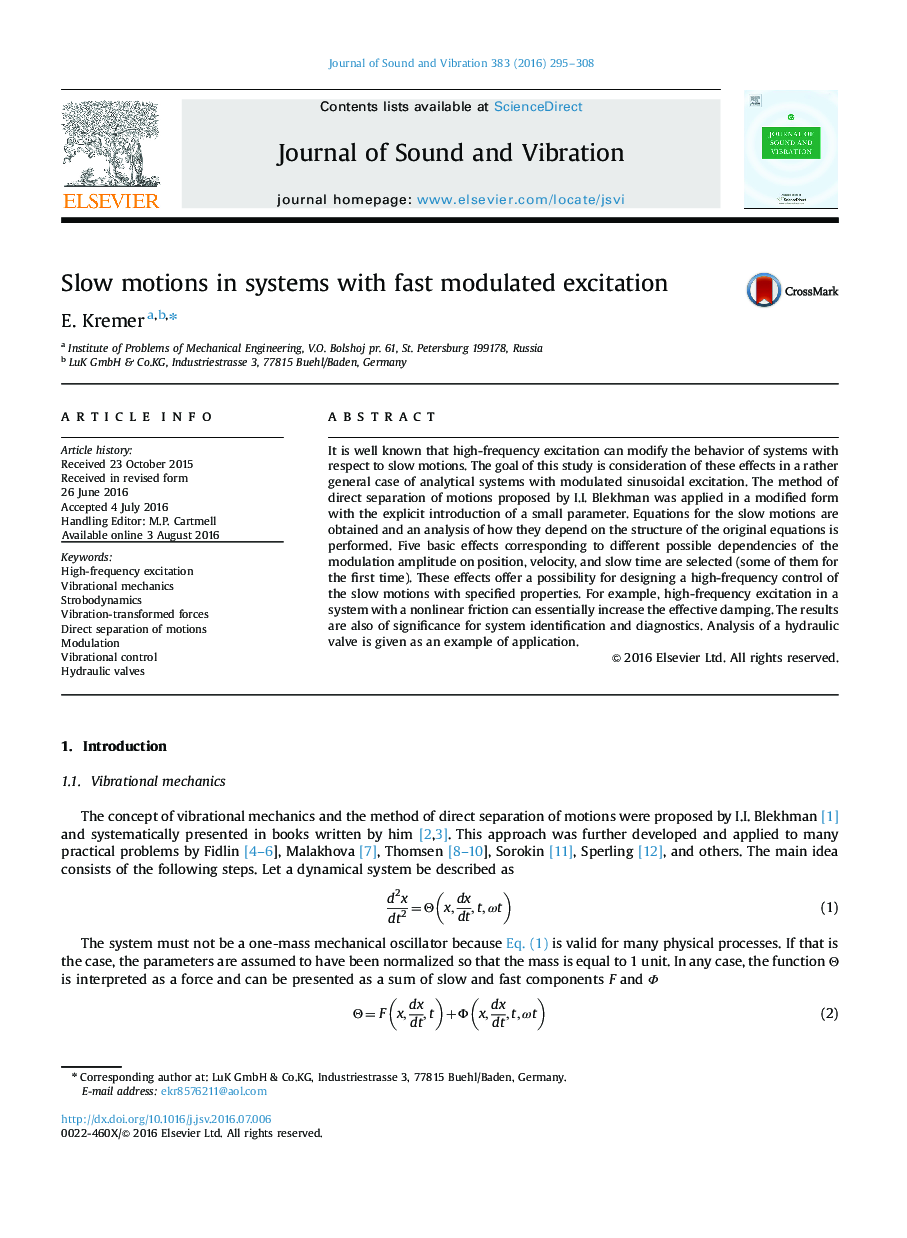| Article ID | Journal | Published Year | Pages | File Type |
|---|---|---|---|---|
| 4924447 | Journal of Sound and Vibration | 2016 | 14 Pages |
Abstract
It is well known that high-frequency excitation can modify the behavior of systems with respect to slow motions. The goal of this study is consideration of these effects in a rather general case of analytical systems with modulated sinusoidal excitation. The method of direct separation of motions proposed by I.I. Blekhman was applied in a modified form with the explicit introduction of a small parameter. Equations for the slow motions are obtained and an analysis of how they depend on the structure of the original equations is performed. Five basic effects corresponding to different possible dependencies of the modulation amplitude on position, velocity, and slow time are selected (some of them for the first time). These effects offer a possibility for designing a high-frequency control of the slow motions with specified properties. For example, high-frequency excitation in a system with a nonlinear friction can essentially increase the effective damping. The results are also of significance for system identification and diagnostics. Analysis of a hydraulic valve is given as an example of application.
Related Topics
Physical Sciences and Engineering
Engineering
Civil and Structural Engineering
Authors
E. Kremer,
